Written by: Crypto Salad
With President Trump officially signing the GENIUS Act into law at the White House, the United States has officially established a regulatory framework for digital stablecoins. This also presents a new round of challenges for many stablecoin issuers. Many people are likely unfamiliar with the GENIUS Act and may have the following questions:
What regulatory measures for stablecoins are mentioned in the US (GENIUS Act)?
What impact will this bill have on USDT and Tether?
Can Tether take appropriate countermeasures?
How does this bill differ from Hong Kong's (Stablecoin Bill)...
The Crypto Salad team has been rooted in the field of cross-border blockchain compliance for many years and will answer the above questions one by one.
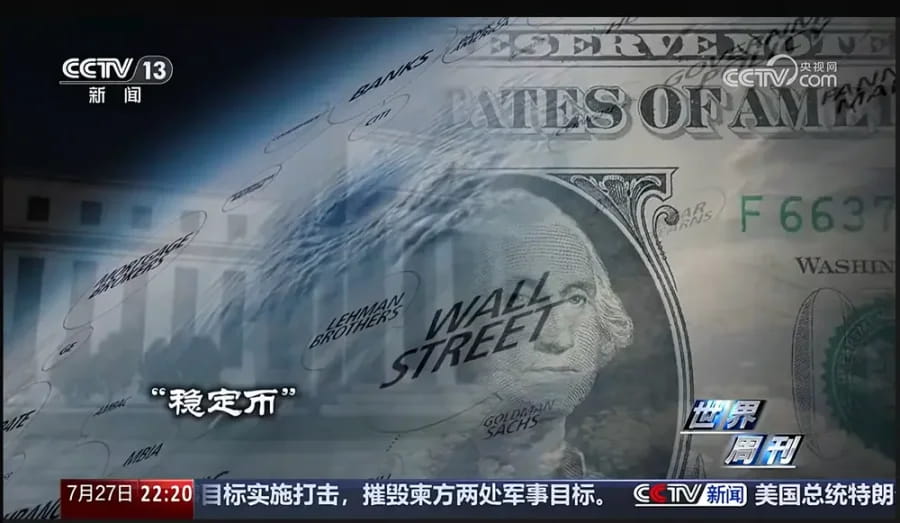
Image source: CCTV program official website
1. What exactly does the (GENIUS Act) say?
First, let's take a look at the GENIUS Act. The GENIUS Act, also known as the "Stablecoin Act," stands for the National Innovation Guidelines for and Establishment of a United States Stablecoin System. This bill aims to establish a comprehensive legal and regulatory framework for stablecoin payments in the United States to promote financial innovation, protect consumers, strengthen monetary sovereignty, and maintain financial stability. The following is a brief introduction to the GENIUS Act's regulatory framework:
1. Core Definition and Scope of the Act: The Act primarily regulates payment stablecoins, which are defined as digital currencies used for payment or settlement and pegged to a fixed currency value. The Act requires that only "approved payment stablecoin issuers" can issue stablecoins in the United States. Approved issuers must be subsidiaries of insured depository institutions, federally qualified non-bank payment stablecoin issuers, or state-qualified payment stablecoin issuers. (Act basis: GENIUS Act, Section 2(22))
2. The Act's Regulatory Framework: The Act establishes a unique dual-track regulatory system. For stablecoins with an issuance volume of more than $10 billion, the Federal Reserve's regulatory framework for depository institutions and the Office of the Comptroller of the Currency's framework for non-bank issuers will apply. For issuers with an issuance volume of less than $10 billion, state regulatory paths can be chosen. The Act's Reserve Requirements: One of the Act's most important consumer protection measures is the 100% reserve requirement. Issuers must hold at least one dollar of permitted reserves for every dollar of stablecoin. Permitted reserves include: coins and currency, bank deposits, short-term Treasury bills, repurchase agreements, money market funds, and central bank reserve deposits. (Act basis: GENIUS Act, Section 4(a)(1))
3. Transparency and disclosure requirements of the Act: The Act requires issuers to establish and disclose stablecoin redemption procedures and to regularly report on outstanding stablecoins and reserve composition. (Act basis: GENIUS Act, Section 6(a)(2))
4. The bill's national security and anti-money laundering provisions: The bill classifies payment stablecoin issuers as financial institutions under the (Bank Secrecy Act), which means they must: maintain effective anti-money laundering and sanctions compliance programs; keep appropriate records of stablecoin transactions; monitor and report suspicious activity; implement policies to block, freeze, and refuse transactions that violate federal or state law; and establish a customer identification program. (Act basis: GENIUS Act, Section 8(a))
2. What impact does this bill have on USDT and Tether?
Let's first explain what USDT is. USDT, also known as Tether, is one of the most representative stablecoins in the current cryptocurrency market. Issued by Tether, it aims to maintain its value by pegging it to a fiat currency (primarily the US dollar). It serves as a crucial liquidity tool and store of value in the cryptocurrency market. USDT's core design pledges to deposit $1 in a bank account as a reserve for every USDT issued, theoretically maintaining a 1:1 peg. Users can convert USDT into US dollars at any time, ensuring its value remains stable. Compared to traditional cross-border remittance methods, USDT offers faster transactions, relatively low fees, and is not restricted by geographic location or bank hours, enabling more efficient cross-border funds transfers.
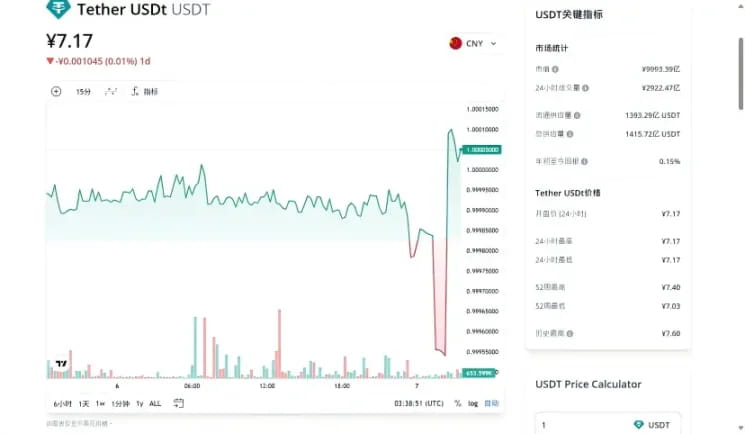
Image source: CoinMarketCap
Based on the bill's content, it's clear that it severely restricts the development of USDT. The GENIUS Act is a US law, and USDT is a US product. Once enacted, based on the aforementioned GENIUS Act, Tether will almost certainly be unable to fully meet compliance requirements. Therefore, in the future of the stablecoin market, Tether's market share will only continue to be eroded until an alternative emerges. Even if Tether and USDT continue to have a place in the future stablecoin market, their use will likely be limited to specific applications.
As to why Tether was unable to meet its requirements, the Crypto Salad Team will review the core content of the bill:
First, the bill explicitly states that stablecoins are not subject to the securities and commodities regulatory system, but are primarily regulated by the banking system;
Secondly, the reserves required by the bill must be high-quality liquid assets, such as US dollar cash, Federal Reserve deposits, bank demand deposits, Treasury bonds maturing within 93 days, or overnight reverse repurchase agreements. Issuers of approved payment stablecoins must maintain reserve assets equal to the value of the stablecoins they issue (1:1) to support the payment stablecoins they issue in circulation. (Act basis: GENIUS Act, Section 4(a)(1))
In addition, issuers of approved payment stablecoins with a combined total issuance of more than $50 billion that are not subject to the reporting requirements of the Securities Exchange Act of 1934 must prepare annual financial statements in accordance with U.S. Generally Accepted Accounting Principles (GAAP) to disclose any related-party transactions; (Act basis: GENIUS Act, Section 3(10)(A))
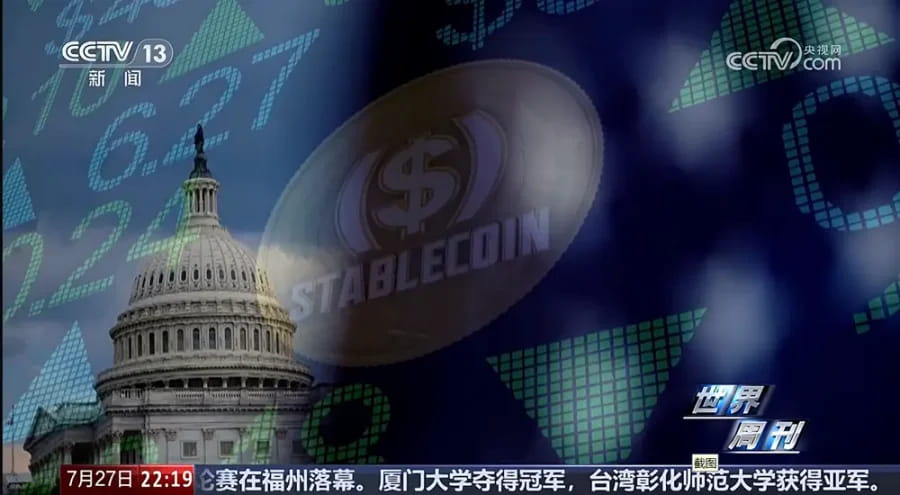
Image source: CCTV program official website
Fourth, anti-money laundering and KYC (Know Your Customer) are core regulatory requirements in the financial industry and compliance sector. These requirements are very strict, requiring a series of processes to verify customer identity, assess risks, and prevent illegal activities such as money laundering, terrorist financing, and fraud. Issuers are prohibited from misappropriating reserves and must publish monthly reserve certificates audited by a registered accounting firm and comply with the Bank Secrecy Act (GENIUS Act, Section 3(5)(A)).
Fifth, the bill grants a super-priority to stablecoin holders. In other words, if the issuer goes bankrupt, the claims of stablecoin holders take precedence over all other creditors, thus achieving a "priority right of repayment." This "priority right of repayment" also encourages more people to purchase the stablecoins issued by the issuer, while further guaranteeing the legitimate rights and interests of stablecoin subscribers. (Act basis: GENIUS Act, Section 10 (3))
As for Tether, the issuing company of USDT, it is unable to meet many requirements of the (GENIUS Act).
First, the reserve requirement in the (GENIUS Act) is "requires full reserve support", but USDT's current reserve is not up to standard, only about 85%, and therefore does not meet the standards of the (GENIUS Act). This may lead to fluctuations in stablecoin prices and a collapse of user trust.
Second, Tether’s auditor is BDO Italia, which in itself does not meet the standards of the U.S. Public Company Accounting Oversight Board.
Third, Tether also needs to sell its non-compliant asset reserves, such as Bitcoin, precious metals, corporate notes and secured loans, which must be replaced with compliant assets.
Furthermore, Tether's market capitalization is so high that it has reached the standard for direct federal regulation. Therefore, the Crypto Salad team believes that it is difficult for Tether to support regular monthly disclosures and strict anti-money laundering requirements (stablecoin issuance exceeding $50 billion and not a statutory filing entity for SEC reporting must undergo annual financial statement audits).
In addition to Tether, Circle (USDC issuer), Paxos (PAX, USDP issuer), and Gemini (GUSD issuer) are all subject to varying degrees of restrictions under the GENIUS Act, such as requirements for the liquidity of reserve assets, disclosure audits, and other requirements. Therefore, the GENIUS Act affects more than just one issuer; it has a significant impact on the entire stablecoin market.
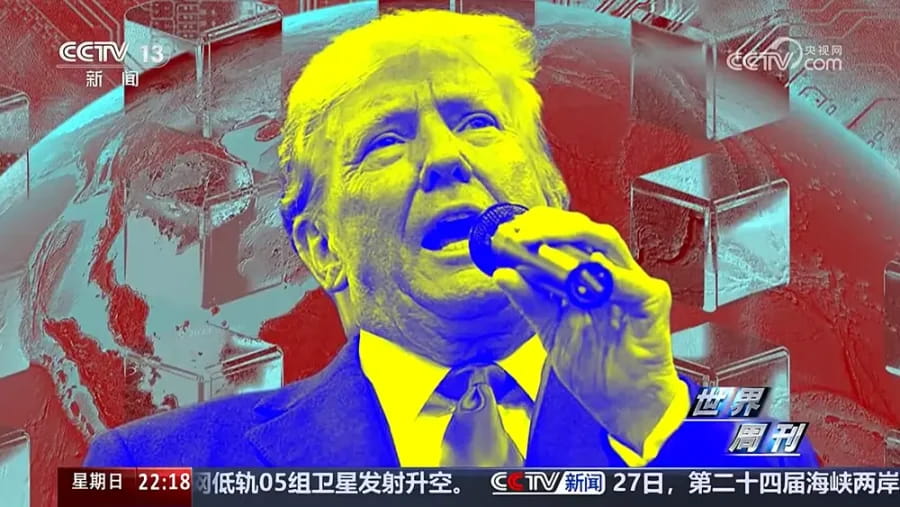
Image source: CCTV program official website
According to the (GENIUS Act), if stablecoin issuers, led by Tether, continue to fail to meet the requirements of the Act, they will face severe penalties.
First, if Tether fails to complete its U.S. entity registration or reserve rectification within the transition period, its USDT will be deemed an “illegal payment tool” and the issuance itself will be illegal, and the company may face criminal charges (based on the GENIUS Act, Section 4(a)(12)).
In addition, three years after the Act takes effect, any foreign stablecoin issuer (including Tether) that is not licensed by the United States will be prohibited from issuing, selling, or providing trading services in the United States. Digital asset service providers (such as exchanges) that violate this provision will face fines of up to $100,000 per day, and Tether, as an issuer, may be included in the "non-compliant list" issued by the Treasury Department, resulting in its stablecoin being forcibly removed from US platforms (Act basis: GENIUS Act, Section 18 (a)(4)).
Of course, the Treasury Department can impose fines on Tether of up to $1 million per day for reserve asset non-compliance (such as holding unlicensed assets), failure to disclose reserve reports on time, or violations of anti-money laundering obligations (based on: GENIUS Act, Section 18 (a)(4)).
Faced with so many adverse consequences, it can be said that the implementation of the (GENIUS) Act has issued an "ultimatum" to stablecoin issuers like Tether.
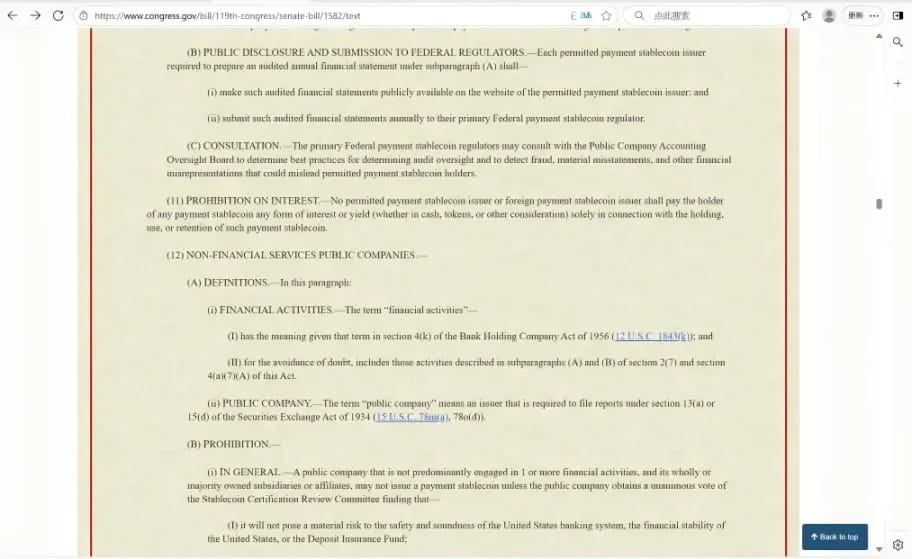
Image source: Congress.Gov
3. What is the difference between the (GENIUS Act) and the Hong Kong (Stablecoin Ordinance)?
Now that Trump has officially signed the GENIUS Act, it's officially here. Coincidentally, Hong Kong's Stablecoin Ordinance will also take effect on August 1, 2025. Both ordinances regulate stablecoins, a type of cryptocurrency. Many may be wondering, what's the difference between these two different regions' stablecoin regulations? In other words, if you want to issue a stablecoin in either region, what's the difference between US and Hong Kong regulations? The following will answer that question.
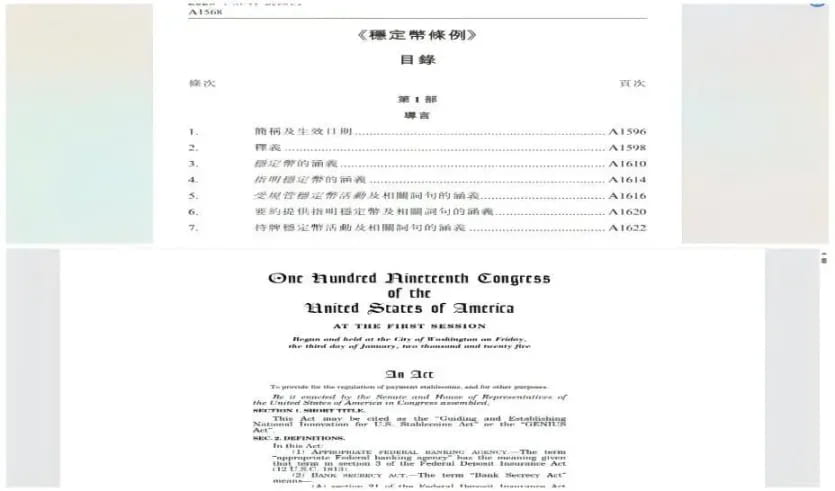
First, the entry requirements for issuers in the two jurisdictions differ. For US-registered entities, they must be either US-registered entities or foreign entities registered with the OCC (providing proof of regulatory equivalence in their home country) and must complete compliance rectification within three years; failure to do so will result in a ban on US market access. For Hong Kong-registered entities, they must be either Hong Kong-registered companies or overseas banks approved by the HKMA (such as HSBC or Standard Chartered). Non-bank institutions must maintain a paid-in capital of HK$25 million (banks are exempt).
Secondly, the two countries have different reserve asset requirements. The US only allows cash and US Treasury bonds maturing within 93 days as reserve assets, and prohibits investment in non-compliant assets such as corporate notes and crypto assets. Hong Kong requires that reserve assets be strictly consistent with the anchor currency (for example, the Hong Kong dollar stablecoin must hold Hong Kong dollar cash or short-term bonds) and prohibits the payment of interest to holders, directly restricting the "interest-bearing stablecoin" business model.
Third, the United States and Hong Kong have different requirements for transparency and audit standards. The United States requires monthly disclosure of reserve asset composition, market value, and audit reports, annual audits by a Public Company Accounting Oversight Board (PCAOB)-certified firm, and the CEO/CFO signing a compliance statement (based on the GENIUS Act, Section 4(10)(a)(iii)).
Hong Kong also requires regular disclosure of the composition, market value and audit results of reserve assets, but does not require PCAOB qualifications, only "independent audit".
Fourth, penalties for violations vary. In the US, violations can result in fines of up to US$1 million per day and may trigger civil damages and criminal charges (e.g., securities fraud, up to 10 years in prison). In Hong Kong, unlicensed offerings carry a maximum fine of HK$5 million and seven years in prison, while fraud carries a maximum fine of HK$10 million and 10 years in prison.
Comparing these four dimensions, Hong Kong offers a better balance between stability and innovation, resulting in more inclusive policies. However, this also comes at the cost of increased competition for licenses. Meanwhile, the United States prioritizes maintaining the hegemony of the US dollar and imposes strict restrictions on issuers of dollar-denominated stablecoins. Therefore, choosing a country to issue a stablecoin has its pros and cons.
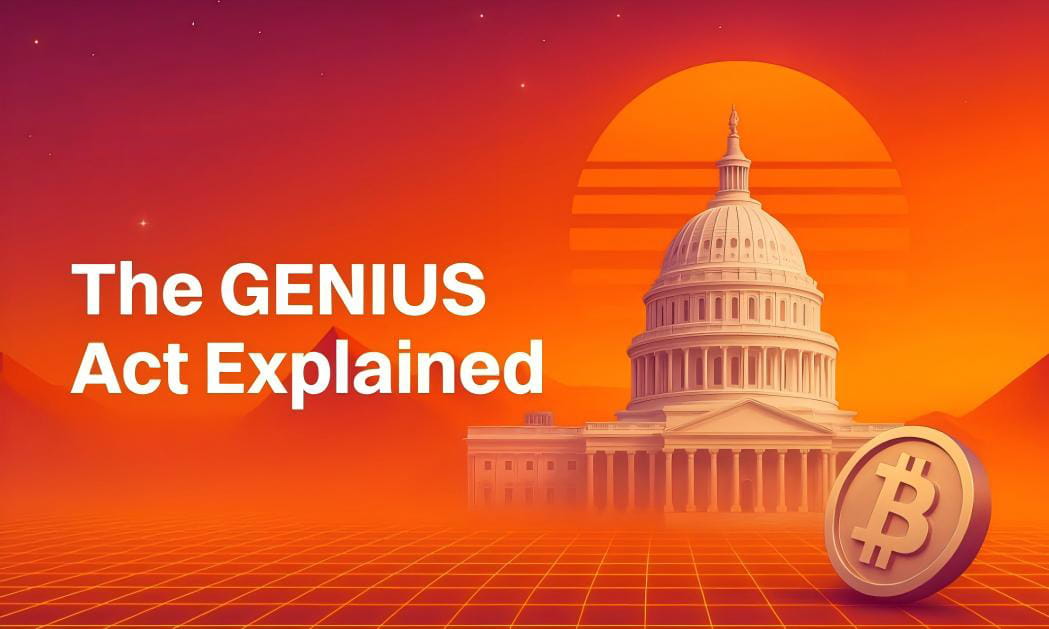
4. Crypto Salad Interpretation
Based on this, the Crypto Salad team believes that the introduction of the GENIUS Act creates a critical 300-day window for Tether. Although the Act provides for an 18-month (approximately 540-day) transition period, if Tether fails to come up with a compliance solution that meets the Act's requirements within 300 days, USDT's market outlook will be largely sealed. If USDT fails to pass US compliance certification, its global market share expansion will be fundamentally constrained. Even if Tether continues to issue more USDT and increase the total token supply, its market share will inevitably decline.
As for its future direction, the following possibilities can be predicted:
First, Tether may choose an "offshore niche" strategy, proactively avoiding countries and regions with strict stablecoin regulations and instead indirectly participating in local markets through a transit mechanism.
Second, if the company fails to overcome compliance bottlenecks, it may trigger systemic risks due to the loss of market trust and eventually be squeezed out of the mainstream market by other compliant stablecoin issuers;
Third, maintain a "lukewarm" status of existence - given that there are still some regulatory gray areas in the current issuance of stablecoins, USDT still has room to survive in the specific scenarios where it penetrated in the early days. It will neither suddenly exit the market nor regain its dominance in the global market.
Furthermore, the Crypto Salad team noted that the GENIUS Act and the Hong Kong Stablecoin Ordinance, which took effect on August 1st, share common characteristics: both are centered around "stablecoin issuance rules" and employ corresponding redemption systems and mandatory disclosure requirements for stablecoin issuers to maximize investor protection. Therefore, despite differing regulatory requirements for stablecoin issuance in the two regions, investors' rights and interests are both strictly protected.
The views expressed in this article represent only the personal opinions of the author and do not constitute legal advice or legal opinions on specific matters.


